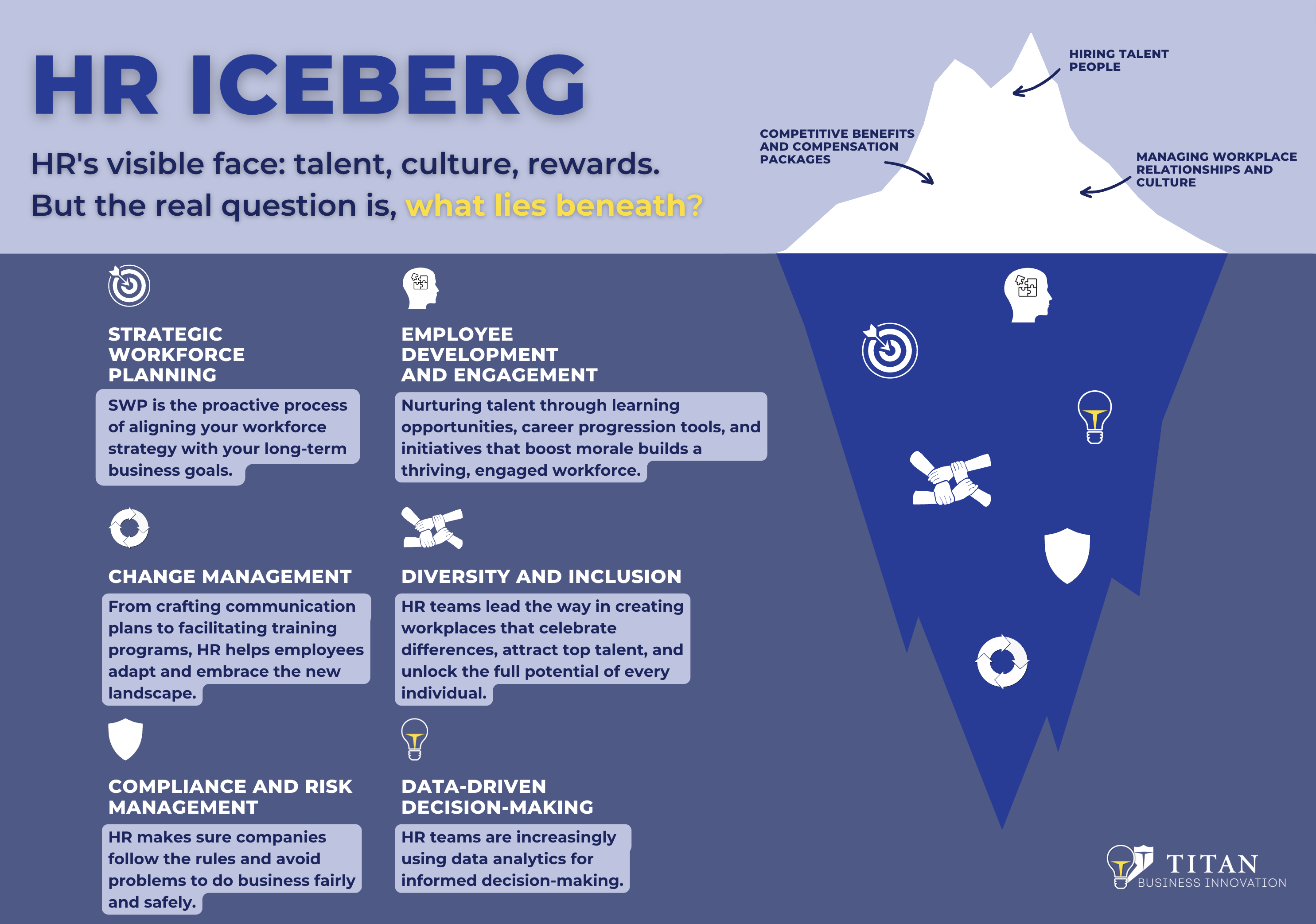An organization’s Human Resources (HR) can be compared to an iceberg. What’s visible on the surface represents a fraction of the essential functions beneath. This article explores the multifaceted nature of HR, highlighting both its visible aspects and the deeper, often unseen layers, with specific examples from Japan and worldwide.
The Visible Surface of the HR Iceberg: Common HR Functions
Recruitment and Talent Acquisition
The recruitment and talent acquisition process is at the top of the HR Iceberg. This is the most visible and often recognized aspect of HR functions. Recruitment involves not only posting job openings and conducting interviews but also encompasses a broader strategy of attracting the right talent. It’s about understanding the needs of different departments, projecting future talent requirements, and developing a strong employer brand. For instance, companies like Google and LinkedIn are known for their innovative approaches to recruitment, leveraging their strong brand appeal and using sophisticated data analytics to attract top talent.
Managing Employee Relations and Workplace Culture
Another crucial function at the visible level of HR is managing employee relations. This includes resolving workplace conflicts, ensuring a safe and respectful working environment, and fostering a positive organizational culture. HR professionals play a pivotal role in creating and upholding policies that shape the workplace culture and set the tone for employee interactions. In organizations like Zappos, HR’s role in nurturing a unique and engaging company culture is evident, where the focus is on creating a fun and inclusive work environment that aligns with the company’s core values.

Benefits and Compensation Management
Overseeing benefits and compensation is another critical aspect of HR’s visible functions. This role involves designing competitive compensation packages, administering benefits, and ensuring the company’s offerings align with market standards. It’s a critical task as it directly impacts employee satisfaction and retention. Multinational corporations like IBM and Samsung have complex compensation structures and benefits programs managed by HR, tailored to meet the diverse needs of their global workforce. These programs are not just about salaries but also include health benefits, retirement plans, and other incentives contributing to employees’ well-being and motivation.
We see the obvious functions like recruiting and hiring talented people, managing workplace relationships and culture, and designing competitive benefits and compensation packages. But what lies beneath?
Diving Deeper: Strategic and Operational Roles
Beneath the surface, HR’s role expands significantly, encompassing a variety of strategic and operational responsibilities.
- Strategic Workforce Planning: HR departments, like at Toyota in Japan, engage in extensive workforce planning, aligning HR strategies with long-term business goals. Toyota’s HR strategies focus on developing a skilled workforce that can adapt to the evolving automotive industry, emphasizing continuous learning and innovation.
- Employee Development and Engagement: Companies like Sony have long recognized the importance of ongoing employee development. Sony’s HR strategies include career pathing, training programs, and initiatives to boost employee morale, focusing on nurturing a creative and innovative workforce.
- Change Management: HR is critical in managing organizational change. For instance, when Rakuten, a Japanese electronic commerce and online retailing company, switched to English as its official language, HR played a pivotal role in this cultural and operational shift, facilitating language training and employee adaptation.
- Compliance and Risk Management: HR departments globally, such as those in multinational corporations like IBM, continuously update policies to comply with international labour laws, focusing on ethical standards and risk mitigation.
- Data-Driven Decision-Making: HR teams are increasingly using data analytics for informed decision-making. Google, for example, uses data analysis to understand workforce trends and employee satisfaction and to improve their hiring processes.
- Diversity and Inclusion: Emphasizing diversity, companies like Unilever have HR policies that promote an inclusive work environment. This includes hiring practices and creating a workplace culture that supports diversity in all its forms.

The Future: Navigating a Global Business Landscape
The HR Iceberg model highlights the depth and complexity of HR functions across different cultural and business landscapes. As the field evolves with technological advancements and innovative strategies, the future of HR is set to be dynamic and transformative. Emphasizing the creation of adaptive, skilled workforces, HR is poised to navigate the challenges of a rapidly changing global business environment, contributing significantly to organizational resilience and success.

